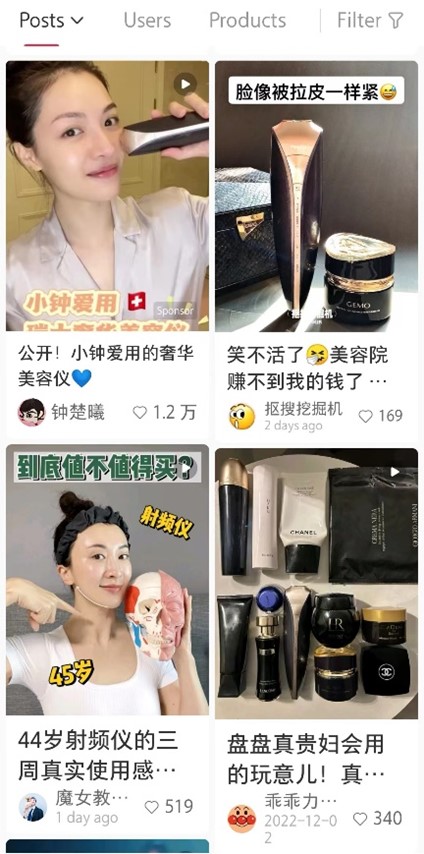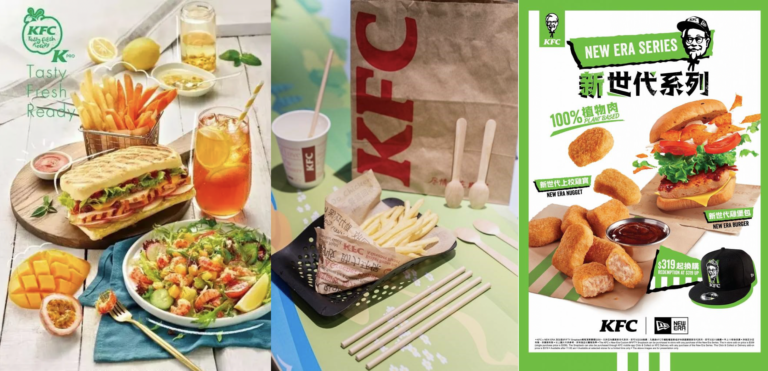The three most frequent strategies used by brands to enter new markets are standardization, localization and glocalization, and there are some subtle differences between the three. Understanding them can better help the brand to resonate with customers around the globe. Standardization focused on making products, services, and processes consistent across regions; whilst localization adapts its offerings and operations to meet local’s needs. Glocalization balances global uniformity with local adaptation in products. Brand localization in China empowers international brands to expand in the competitive Chinese market.
What is brand localization in China?
Brand localization is the process of adapting the brand’s messaging and identity to better resonate with local consumers. Brand localization in China is useful for international brands to create a connection with local consumers and build awareness and recognition in new markets. Generally, some main strategies to localize foreign brands in China, include focusing on the special needs of Chinese consumers with local insights, adapting Chinese cultural references to create products, localizing the marketing strategy by going online and establishing ties with local influencers, as well as having a localized brand name.
However, localizing too much can bring about the risk of losing the brand’s authenticity. Meanwhile, if there is not enough localization, then the product may not meet Chinese consumers’ expectations. Foreign companies are walking on a fine line between localizing and keeping their international image. Though this is the case in all industries, the line falls in a different place with each sector, brand, and product. So how does a foreign brand work out to what extent they need to localize? By analyzing Chinese market entry cases, we can shed light on how brands find the balance between localization and honoring their existing brand image.
KFC in China: Targeting the preferences of Chinese customers
KFC in China is positioned as a Western fast-food brand with Chinese characteristics. In 1987, KFC opened its first outlet in China, which was also the first Western fast-food chain to enter the Chinese market. At the very beginning of its development, KFC regarded China as the most important international market and firmly implemented a localization strategy. KFC targeted Chinese customers by introducing many products unique to the Chinese market, such as egg tarts, traditional Beijing chicken rolls, deep-fried dough sticks and other dishes, which were deeply loved by Chinese consumers.

Moreover, KFC stepped up its localization efforts in recent years. Since 2021, KFC has launched the “Good Morning · Taste of the City” program, providing localized breakfasts according to customers’ preferences in different regions of China. On January 18th, 2021, the US fast-food chain launched its first product, Hot-Dry Noodles with Sesame Paste (热干面) from Wuhan. The initiative created a buzz online and attracted a great number of customers. On December 27th, 2021, “KFC beef noodles (牛肉粉)” also debuted officially in Hunan. Noodles are the most popular local breakfast staple and a cultural feature of Hunan. Thus, the introduction of beef noodles by KFC achieved great success. Moreover, traditional Chinese breakfasts like spicy soup, Xiao Long Bao (steamed buns) and polo buns are also available in KFC. Such a localization strategy is well received by Chinese consumers, proven by its leading market share of about 13.5% in China’s Quick Service Restaurant (QSR) market.
Puma in China: embracing the Chinese culture
Puma, a world-renowned sports brand, has localized itself in China. Puma adjusted its positioning in China dynamically, such as launching products under the Guochao trend. Stemming from a growing sentiment of nationalism and cultural confidence in consumption, the pursuit of the Guochao aesthetic has been rising in all industries in recent years and played a major role in changing Chinese consumers’ perception of brands. Domestic products or products with Guochao elements are becoming more popular with Chinese consumers. In keeping with its “in China for China” brand slogan, Puma also embraced Chinese culture enthusiastically. For the 2023 Spring Festival, PUMA launched the annual campaign # Can be Proud # in January, which creatively incorporated elements from the four great inventions of ancient China into product design, presenting the unique combination between sports and traditional Chinese culture. Chinese culture, including the four great inventions, always makes the Chinese proud, which is the meaning of the campaign’s name. Using such elements goes with the Guochao trend and is a great way to win the favor of Chinese customers.

Additionally, Puma was very wise to choose the Spring Festival as the time to promote its campaign. To Chinese consumers, the Spring Festival is the most important and iconic festival to embrace traditional Chinese culture. Furthermore, people are used to making special purchases for the coming new year, including new clothes, shoes and accessories. Therefore, this is also the best time for brands to embrace Chinese culture and strike a chord with Chinese consumers.
The beauty industry in China: online marketing and teaming up with Chinese KOL
Localizing the marketing strategy by going online and establishing ties with local influencers is an important way to establish brand trust. According to data from CBNData, 70% of brands in China increased their investment in online marketing in 2021. This is especially true for the beauty industry in China.
According to iqingyan’s statistics, China is the second-largest beauty market in the world and reached 798.3 billion RMB in 2022. With the rapid development of China’s cosmetics market, many overseas brands see the huge potential opportunities and choose to enter the Chinese market. China is the world’s largest e-commerce market. Brands like TAKAMI, Skinbetter Science, and Carita all entered the market through online channels such as Tmall flagship stores, which was a relatively cost-effective way.
To enter the Chinese e-commerce market, the use of social media platforms like Xiaohongshu greatly shortens the distance between brands and consumers. For instance, GEMO, a luxury beauty device brand from Switzerland, was launched in Xiaohongshu in early November 2022. Currently, there are more than 3,000 posts related to it on the Xiaohongshu platform.

Furthermore, with internet penetration and usage hours continuing to increase, KOL marketing is becoming indispensable for online branding strategies in China. For consumers, it’s very important to have some KOLs they trust, to try out cosmetics for them before shopping. The posts mentioned above are mainly recommended by KOLs, including famous Chinese bloggers and stars like Wang Ziwen and Zhong Chuxi. Their content includes comparison evaluation, utilization assessment and scientific introduction. Such use of word-of-mouth marketing is incredibly effective in affecting Chinese consumers’ purchasing decisions. Indeed, KOLs influenced 48% of Gen Z shoppers on e-commerce platforms in 2021.
Brand naming process in China: 80% research 20% creativity
Brand naming is an important process for brand localization in China as a brand name is central to a brand’s image. The challenge is to present a brand competently and professionally in China, whilst considering local cultural, historical and linguistic practices. Most international companies face challenges in Chinese brand naming, regardless of industry or scale.
A very successful example is 露华浓 (Revlon), an American cosmetics brand. The Chinese translation of Revlon comes from Li Bai’s poem describing Lady Yang (one of the four legendary beauties of ancient China): ” 云想衣裳花想容,春风扶槛露华浓 (Her robe is made of clouds, her face was formed by flowers; caressed by the vernal breeze, freshened by morning dew)” 露华浓 and Revlon are similar in pronunciation in Chinese, and the meaning is related to classical Chinese beauty, thus resonated with a lot of Chinese consumers.
Another example is Rejoice (飘柔), one of the first international hair care brands to enter the Chinese market. According to Synlen, Rejoice’s sales in China exceeded 27.39 million RMB and ranked as the fourth best-seller in June 2022. The success of Rejoice is inseparable from its Chinese brand name. In English, rejoice means happiness, but the brand chose a descriptive approach in translating its name. Rejoice’s Chinese name is 飘柔 where the literal translation of the characters means to flow with the wind and soft respectively. The name evoked the impression that the product’s ability to upkeep beautiful and soft hair, thus led to the urge to purchase the product.
In conclusion, these successful China market strategy cases vary in the extent to which brands are localized to the culture. These cases highlighted the importance of engaging local experts to conduct research on Chinese consumers and create names that resonate with the brand image. Thus, a solid naming process is 80% research and 20% creativity. Each industry and even brand within an industry needs its own unique formula for mixing its own characteristics and history with Chinese elements, proving that there is no single path to success in China.
What can we learn about brand localization in China?
- Brand localization is crucial for international brands to build resonance and trust among Chinese consumers in order to excel in the highly competitive Chinese market.
- Localization adapts its products, offerings, and processes for local consumers. However, both over-localization and under-localization will bring negative effects. So, it is vital to find the balance between localizing and keeping its international image through comprehensive research of local consumers.
- Targeting the preferences of Chinese customers and creating new products tailored to their culture are parts of a great brand localization strategy in China.
- Domestic products or products with Guochao elements are becoming more popular with Chinese consumers. Thus, embracing Chinese culture is a great way for foreign brands to win the favor of Chinese customers.
- Most of the time, Chinese consumers take online KOLs’ recommendations into account before shopping. Hence, foreign brands can build trust among Chinese consumers by localizing their marketing strategy. Such efforts include establishing an online presence and teaming up with Chinese KOLs.
- The brand name is central to a brand’s image, especially for foreign brands which choose to localize in China. Coming up with a good Chinese brand name that resonates with the audience requires research and a deep understanding of Chinese culture. Therefore, a solid Chinese naming procedure is 80% research and 20% creativity.
Author: Lyu Ai





